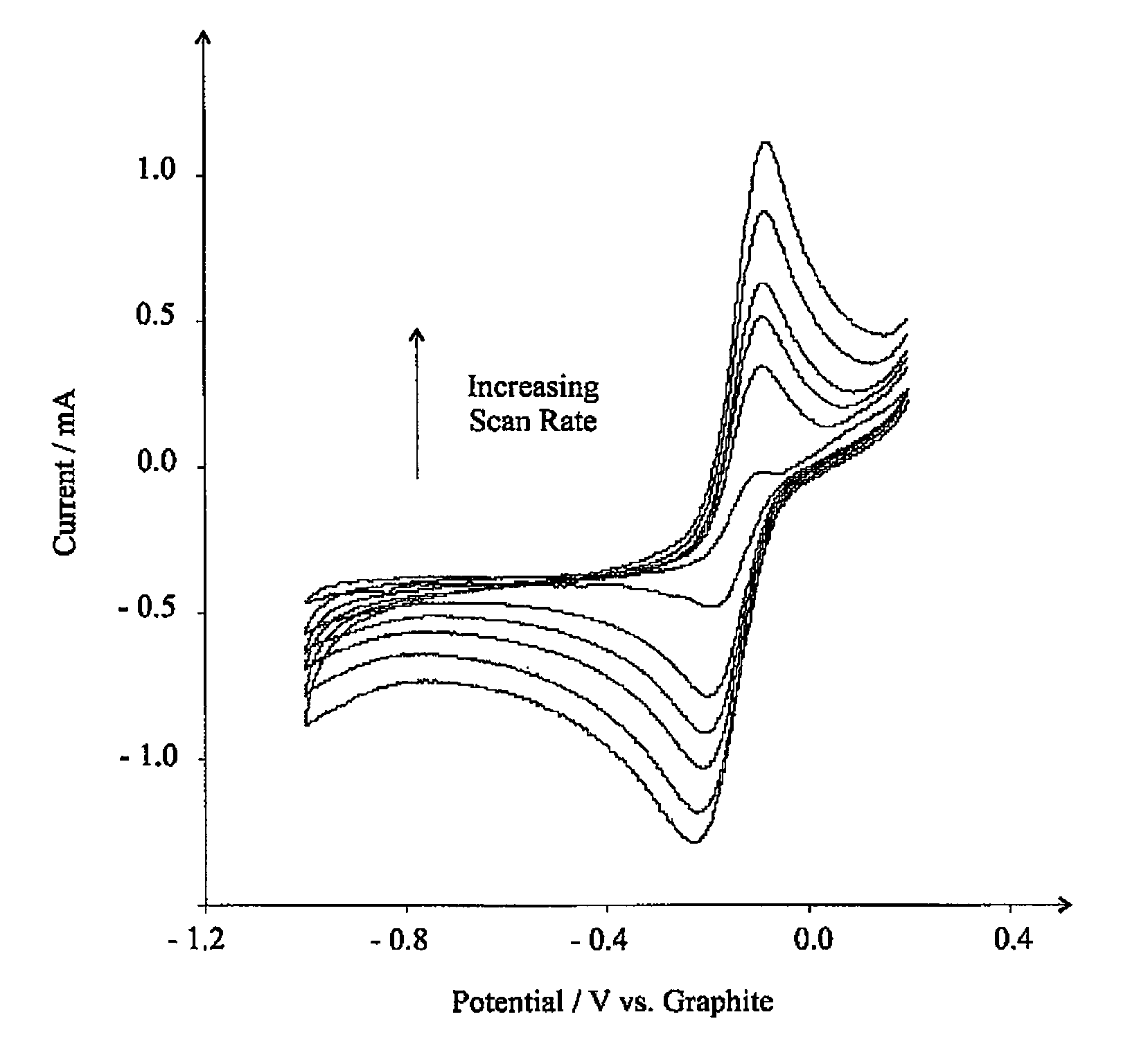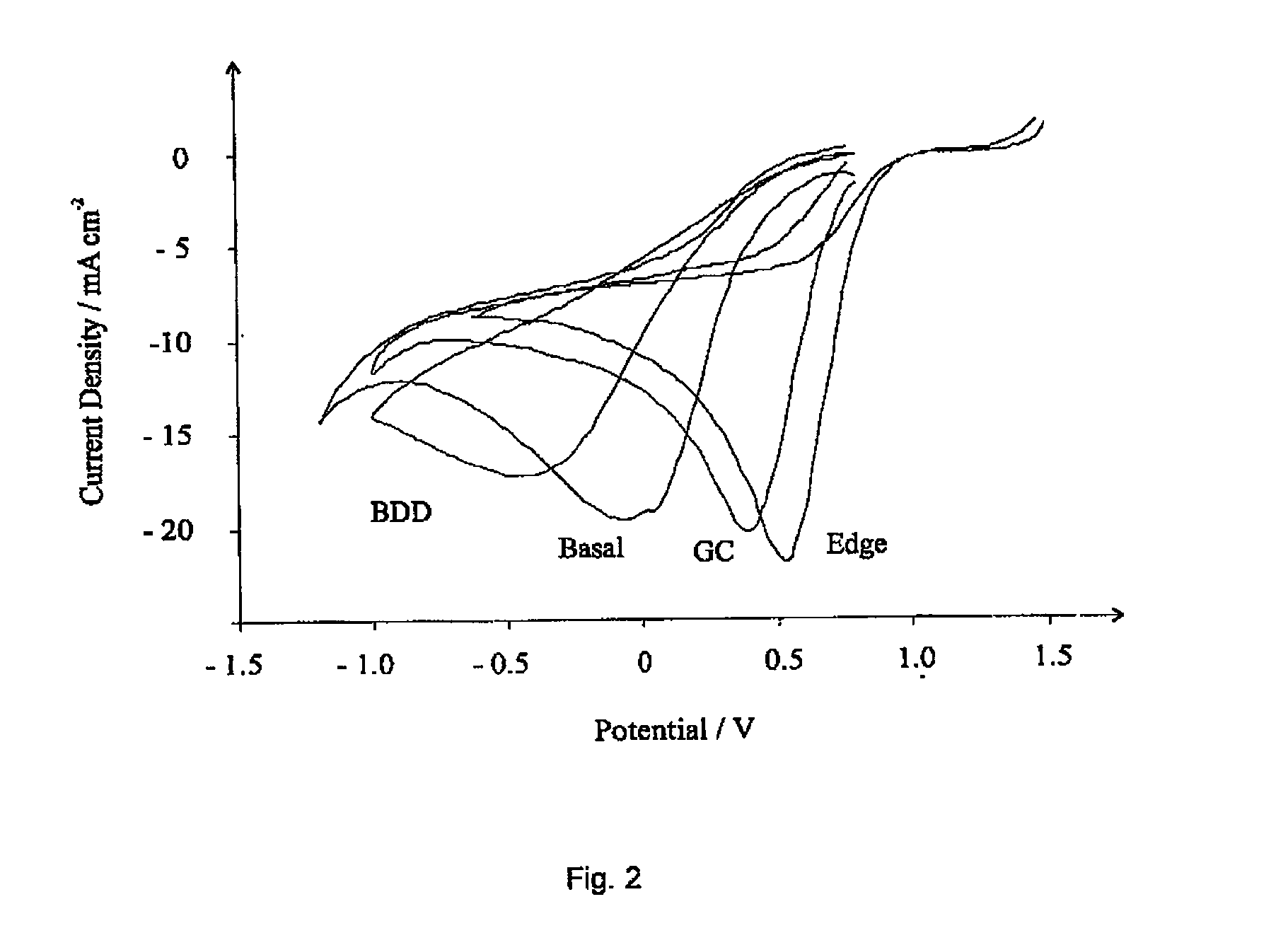Amperometric Sensor and Method for the Detection of Gaseous Analytes Comprising A Working Electrode Comprising Edge Plane Pyrolytic Graphite
- Summary
- Abstract
- Description
- Claims
- Application Information
AI Technical Summary
Benefits of technology
Problems solved by technology
Method used
Image
Examples
example 1
Detection of Chloride
[0077]The sensing characteristics of an edge plane pyrolytic graphite (eppg) electrode were compared with other carbon-based electrode materials, namely boron-doped diamond (BDD), basal plane pyrolytic graphite (bppg) and glassy carbon (GC) electrodes. This was achieved by carrying out voltammetric measurements using a μ-Autolab II potentiostat (ECO-Chemie, The Netherlands) with a three electrode configuration.
[0078]First, the electrochemical oxidation of chloride in aqueous media was considered. FIG. 1 (a) shows the current-voltage voltammetric response when a freshly polished BDD electrode in a solution of 0.05M NaCl in 0.1M HNO3 was scanned from 0.0 V up to the on-set of solvent breakdown. A single wave is observed at +1.4 V (with a saturated calomel electrode, hereinafter referred to as “vs. SCE”), which disappears on subsequent scans. A reproducible signal was found to occur only when the electrode had undergone a rigorous polishing regime. This involved po...
example 2
Detection of NO2
[0103]First, cyclic voltammograms of nitrogen dioxide (99.5%, Aldrich) in a 5.0 M sulphuric acid solution (all solutions were prepared with deionised water of resistivity not less than 18.2 M Ohm cm (Vivendi water systems) were recorded at an eppg electrode. This concentration was chosen since Stetter et al report this for their detection of nitrogen dioxide using a gold working electrode, observing an oxidation wave at +0.2 V (vs. platinum wire); no reduction wave was observed under their conditions.
[0104]FIG. 7 shows the voltammetric response at the eppg electrode. Clearly a reduction wave is observed at ca. −0.21 V (vs. graphite reference) with an oxidation wave occurring at ca. −0.10 V with a large anodic wave at +0.48 V. For clarity, a voltammogram is shown in the absence of nitrogen dioxide confirming the waves corresponding to the electrochemical reduction and oxidation of nitrogen dioxide. It is observed that the oxidation peak at ca. −0.10 V is only observe...
PUM
 Login to View More
Login to View More Abstract
Description
Claims
Application Information
 Login to View More
Login to View More - R&D
- Intellectual Property
- Life Sciences
- Materials
- Tech Scout
- Unparalleled Data Quality
- Higher Quality Content
- 60% Fewer Hallucinations
Browse by: Latest US Patents, China's latest patents, Technical Efficacy Thesaurus, Application Domain, Technology Topic, Popular Technical Reports.
© 2025 PatSnap. All rights reserved.Legal|Privacy policy|Modern Slavery Act Transparency Statement|Sitemap|About US| Contact US: help@patsnap.com



